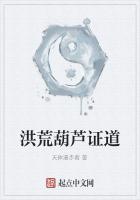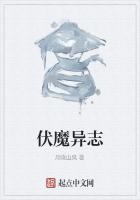THE STORY OF RUBBER
One day in 1852, at Trenton, New Jersey, there appeared in the Circuit Court of the United States two men, the legal giants of their day, to argue the case of Goodyear vs.Day for infringement of patent.Rufus Choate represented the defendant and Daniel Webster the plaintiff.Webster, in the course of his plea, one of the most brilliant and moving ever uttered by him, paused for a moment, drew from himself the attention of those who were hanging upon his words, and pointed to his client.He would have them look at the man whose cause he pleaded: a man of fifty-two, who looked fifteen years older, sallow, emaciated from disease, due to long privations, bitter disappointments, and wrongs.This was Charles Goodyear, inventor of the process which put rubber into the service of the world.Said Webster:
"And now is Charles Goodyear the discoverer of this invention of vulcanized rubber? Is he the first man upon whose mind the idea ever flashed, or to whose intelligence the fact ever was disclosed, that by carrying heat to a certain height it would cease to render plastic the India Rubber and begin to harden and metallize it? Is there a man in the world who found out that fact before Charles Goodyear? Who is he? Where is he? On what continent does he live? Who has heard of him? What books treat of him? What man among all the men on earth has seen him, known him, or named him? Yet it is certain that this discovery has been made.It is certain that it exists.It is certain that it is now a matter of common knowledge all over the civilized world.It is certain that ten or twelve years ago it was not knowledge.It is certain that this curious result has grown into knowledge by somebody's discovery and invention.And who is that somebody? The question was put to my learned opponent by my learned associate.
If Charles Goodyear did not make this discovery, who did make it?
Who did make it? Why, if our learned opponent had said he should endeavor to prove that some one other than Mr.Goodyear had made this discovery, that would have been very fair.I think the learned gentleman was very wise in not doing so.For I have thought often, in the course of my practice in law, that it was not very advisable to raise a spirit that one could not conveniently lay again.Now who made this discovery? And would it not be proper? I am sure it would.And would it not be manly? Iam sure it would.Would not my learned friend and his coadjutor have acted a more noble part, if they had stood up and said that this invention was not Goodyear's, but it was an invention of such and such a man, in this or that country? On the contrary they do not meet Goodyear's claim by setting up a distinct claim of anybody else.They attempt to prove that he was not the inventor by little shreds and patches of testimony.Here a little bit of sulphur, and there a little parcel of lead; here a little degree of heat, a little hotter than would warm a man's hands, and in which a man could live for ten minutes or a quarter of an hour; and yet they never seem to come to the point.I think it is because their materials did not allow them to come to the manly assertion that somebody else did make this invention, giving to that somebody a local habitation and a name.We want to know the name, and the habitation, and the location of the man upon the face of this globe, who invented vulcanized rubber, if it be not he, who now sits before us.
"Well there are birds which fly in the air, seldom lighting, but often hovering.Now I think this is a question not to be hovered over, not to be brooded over, and not to be dealt with as an infinitesimal quantity of small things.It is a case calling for a manly admission and a manly defense.I ask again, if there is anybody else than Goodyear who made this invention, who is he? Is the discovery so plain that it might have come about by accident?
It is likely to work important changes in the arts everywhere.ITINTRODUCES QUITE A NEW MATERIAL INTO THE MANUFACTURE OF THE ARTS, THAT MATERIAL BEING NOTHING LESS THAN ELASTIC METAL.It is hard like metal and as elastic as pure original gum elastic.Why, that is as great and momentous a phenomenon occurring to men in the progress of their knowledge, as it would be for a man to show that iron and gold could remain iron and gold and yet become elastic like India Rubber.It would be just such another result.
Now, this fact cannot be denied; it cannot be secreted; it cannot be kept out of sight; somebody has made this invention.That is certain.Who is he? Mr.Hancock has been referred to.But he expressly acknowledges Goodyear to be the first inventor.I say that there is not in the world a human being that can stand up and say that it is his invention, except the man who is sitting at that table."The court found for the plaintiff, and this decision established for all time the claim of the American, Charles Goodyear, to be the sole inventor of vulcanized rubber.
This trial may be said to be the dramatic climax in the story of rubber.It celebrated the hour when the science of invention turned a raw product--which had tantalized by its promise and wrought ruin by its treachery--into a manufacture adaptable to a thousand uses, adding to man's ease and health and to the locomotion, construction, and communication of modern life.
When Columbus revisited Hayti on his second voyage, he observed some natives playing with a ball.Now, ball games are the oldest sport known.From the beginning of his history man, like the kitten and the puppy, has delighted to play with the round thing that rolls.The men who came with Columbus to conquer the Indies had brought their Castilian wind-balls to play with in idle hours.But at once they found that the balls of Hayti were incomparably superior toys; they bounced better.These high bouncing balls were made, so they learned, from a milky fluid of the consistency of honey which the natives procured by tapping certain trees and then cured over the smoke of palm nuts.Adiscovery which improved the delights of ball games was noteworthy.















